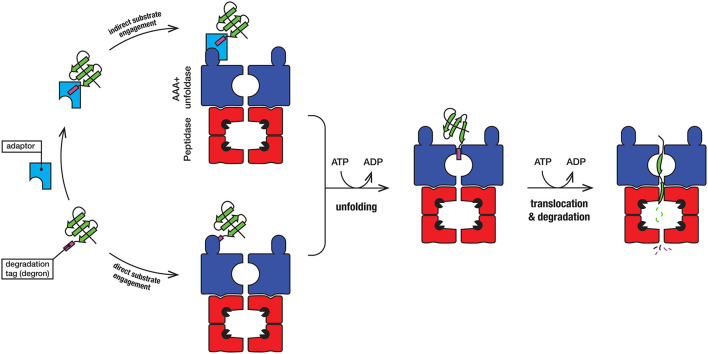Figure 2.
In the first step, the substrate (green) engages with the AAA+ unfoldase (blue) via the degradation tag (commonly referred to as a degron). The degron (purple) is generally located at the N- or C-terminal end of the substrate, although in some case it may be internal (and exposed following unfolding or dissociation of the protein from a complex). For direct recognition by the AAA+ unfoldase (blue), the degron is engaged either by a specialized accessory domain or by specific loops, located at the distal end of the machine. Following recognition of the degron, the substrate protein is unfolded by the ATP-dependent movement of axial pore loops. The unfolded substrate is then translocated into the associated peptidase (red), where the peptide bonds are hydrolyzed by the catalytic residues (black packman) into short peptides. The peptides are released, either through the axial pore or holes in the side walls that are created during the cycle of peptide hydrolysis.

